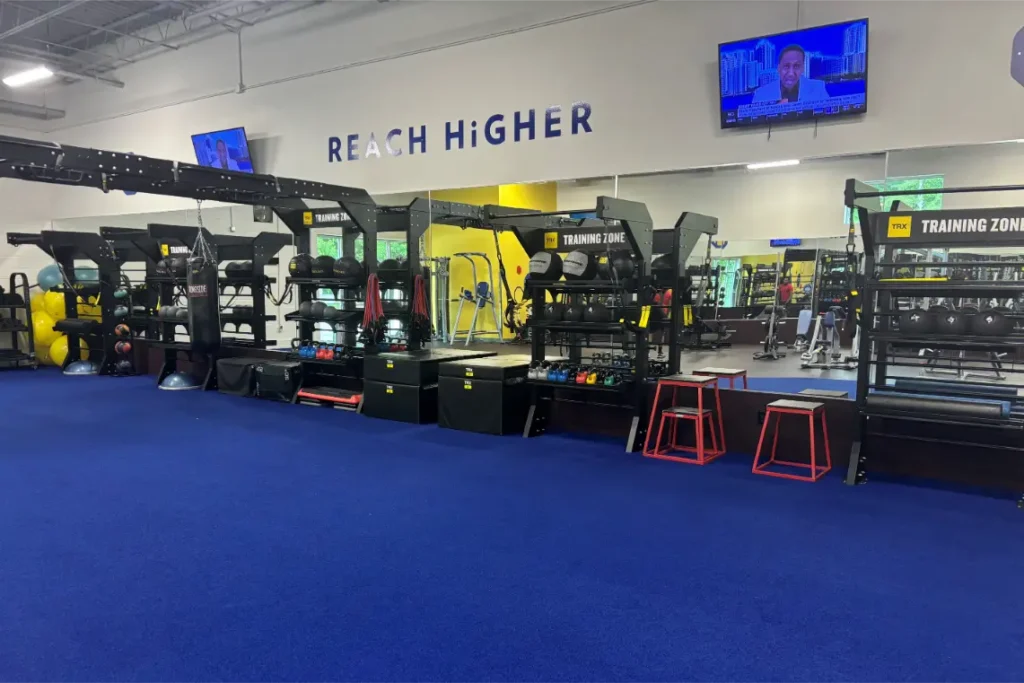This form of exercise might sound technical, but it’s really all about mastering your body’s movements using minimal equipment. At its core, calisthenics involves a variety of movements that aim to improve your strength, flexibility, and overall fitness through exercises like push-ups, squats, and pull-ups. It’s a beautifully simple yet effective way to sculpt and strengthen your body using just your body weight.
Benefits of calisthenics for women
For women, especially beginners, calisthenics offers a unique set of advantages. It’s not just about building muscle or endurance; it’s about enhancing functional strength that supports everyday activities.
Imagine lifting groceries, carrying kids, or rushing up a flight of stairs — all these tasks become easier! Plus, it’s fantastic for improving posture, balance, and even mental health.
Getting started
One of the best parts about calisthenics is that you can get started with virtually no equipment. However, having a few basics can enhance your experience and help you perform exercises more effectively.
Consider grabbing a yoga mat for comfort, especially while doing floor exercises or stretching. Resistance bands and a pull-up bar can also be great additions as you progress, but they’re not necessary at the beginning.
Setting realistic goals
Start with simple objectives, like completing a full workout twice a week or mastering a specific exercise, such as a full push-up or a 30-second plank. These small victories not only boost your motivation but also pave the way for more challenging goals. Remember, this is your journey, and it’s all about gradual improvement and personal satisfaction.
Warm-up routine
Starting your workout with a warm-up routine is essential for preparing your muscles and joints for the exercise ahead. It helps reduce the risk of injury and can improve your performance in the main workout session. Here’s a quick, effective warm-up routine to get your body prepped:
- Arm circles: Stand with your arms extended by your sides and rotate them in small circles that gradually get larger. Do this for about 30 seconds in each direction.
- Leg swings: Hold onto a wall or chair for balance and swing one leg forward and backward. This loosens up your hip flexors and hamstrings. Perform 15 swings on each leg.
- Jumping jacks: This classic exercise gets your heart rate up and muscles warmed. Aim for at least 30 seconds.
- High knees: Jog in place, pulling your knees as high as they can go. This warms up your lower body and gets the blood pumping.
Core calisthenics exercises
These exercises are the foundations of any calisthenics workout:
Push-ups
If a standard push-up feels too challenging, start with wall push-ups or push-ups from your knees. Both modifications reduce the weight you need to lift, making the exercise more manageable while you build strength. Focus on maintaining a straight line from your head to your knees, engaging your core, and keeping your elbows close to your body as you lower down and push up.
Squats
Stand with your feet shoulder-width apart, toes slightly turned out. Begin by pushing your hips back as if you’re sitting in a chair, bending your knees while keeping your chest up and your core tight. Lower yourself until your thighs are parallel to the ground, then push through your heels to stand back up. Squats are fantastic for building strength in your legs and core, and they also improve mobility.
Pull-ups
Pull-ups are a challenging exercise, especially for beginners, but don’t let that discourage you! You can use an assisted pull-up machine to help lift some of your body weight. Alternatively, you can practice ‘negative’ pull-ups, where you focus on the downward phase of the movement by jumping up to the bar and slowly lowering yourself down. This helps build the necessary muscle strength to eventually perform an unassisted pull-up.
If you are looking for a gym in Fayetteville where you can find equipment that can support your calisthenics workout, then get your 3-day free pass at HiTone Fitness now.
Planks
Start on your forearms and toes, ensuring your elbows are directly under your shoulders. Engage your core, glutes, and thighs to keep your body in a straight line from head to heels. Avoid letting your hips sag. Hold this position for as long as you can maintain good form, starting with 20 seconds and gradually increasing the duration. Planks are excellent for building endurance in both the abs and back, as well as stabilizing muscles.
Full-body calisthenics workouts
Circuit 1 (Repeat 3 times):
- 10 push-ups (or modifications if standard push-ups are too challenging)
- 15 bodyweight squats
- 30-second plank
- 5 assisted pull-ups (or negative pull-ups for beginners)
- 30-second rest
Circuit 2 (Repeat 3 times):
- 10 glute bridges
- 15 lunges (each leg)
- 15 bicycle crunches
- 30-second rest
Schedule for beginners
Day 1: Full Body Workout
Day 2: Active Rest (such as light walking or yoga)
Day 3: Full Body Workout
Day 4: Active Rest
Day 5: Full Body Workout
Day 6 & 7: Rest or engage in light activity
Final thoughts
This beginner’s guide has laid the foundation, providing you with the tools and exercises needed to start effectively. Remember, the key to success in calisthenics—or any fitness regimen—is consistency and patience. Progress might be gradual, but with each workout, you’re building strength and confidence. Stay committed, listen to your body, and gradually increase the intensity of your workouts as you become more comfortable.







